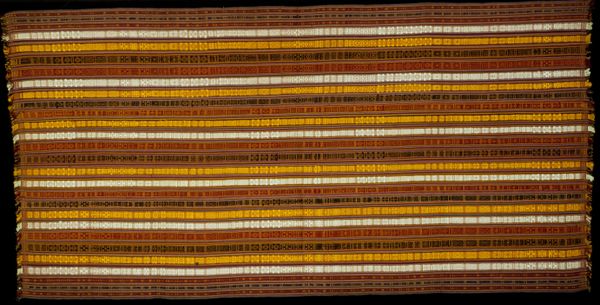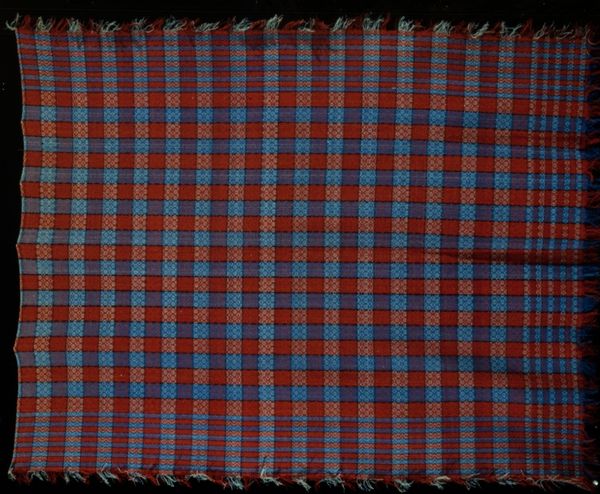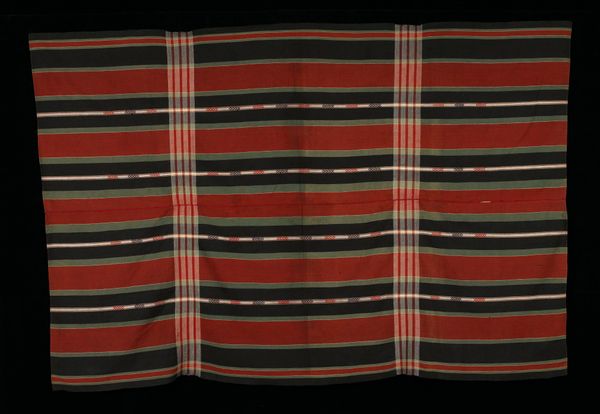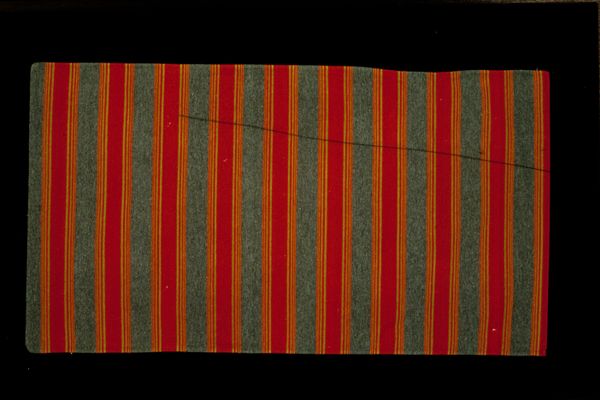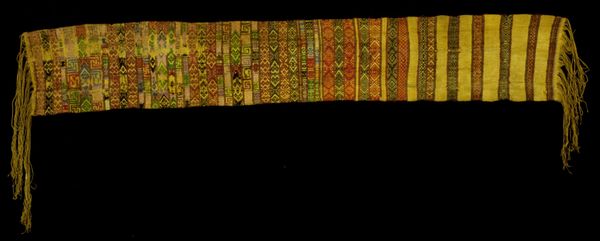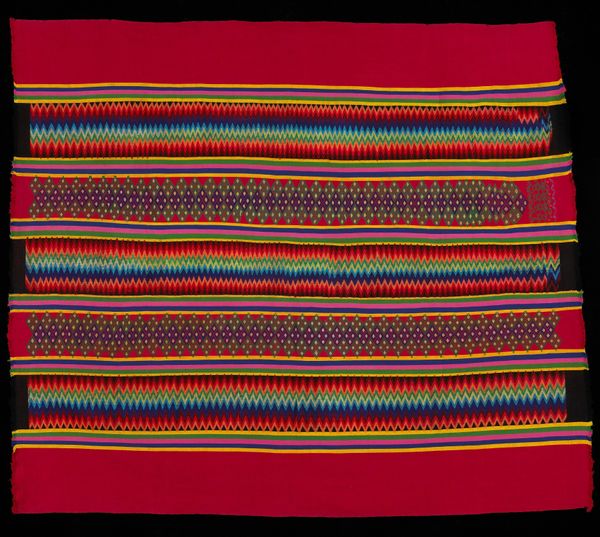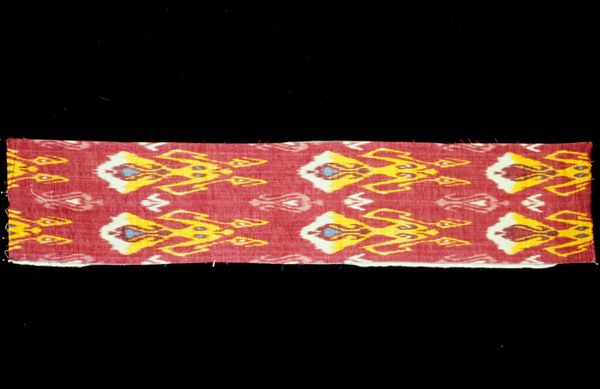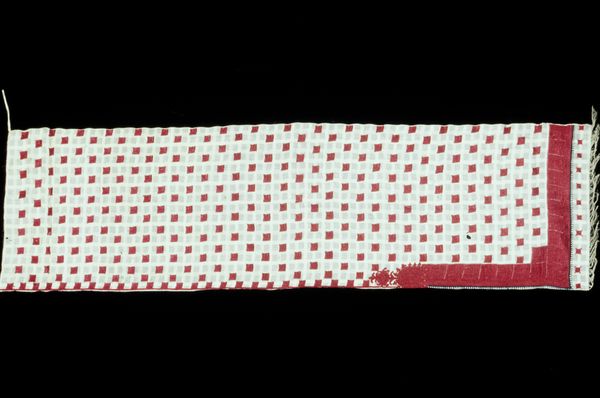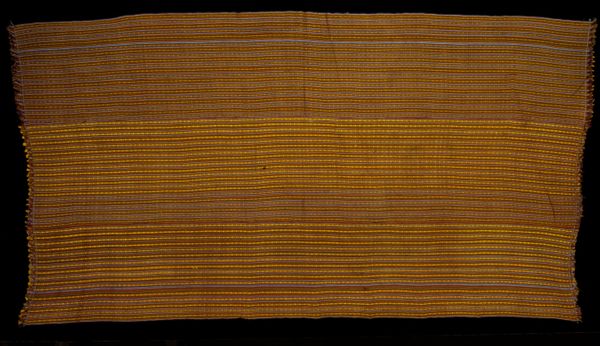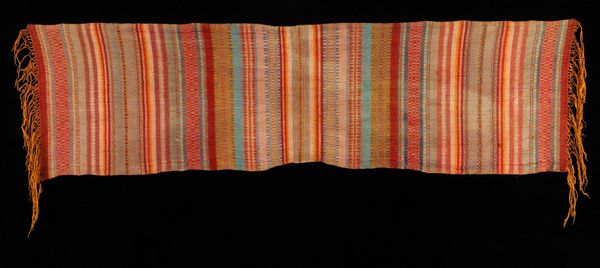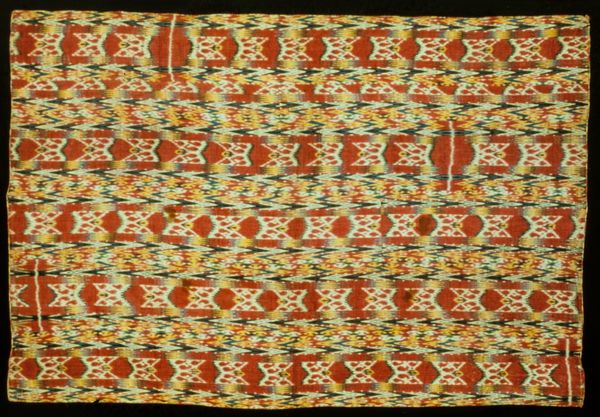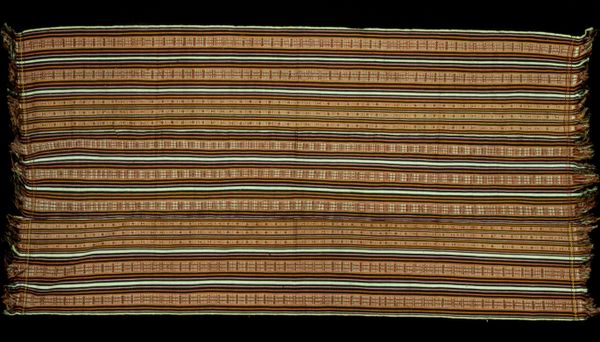
textile
#
textile
#
decorative-art
Dimensions: 104 x 54 in. (264.16 x 137.16 cm) (Irregular shape)
Copyright: Public Domain
Editor: Here we have an intricately woven shawl, believed to be from the 19th century and created by an anonymous artist. The textile itself is captivating. Its gridded pattern alternates from lighter shades to richer red and black tones. I’m struck by its graphic nature; it feels quite modern. What stands out to you? Curator: It’s fascinating to consider the global movement of textiles and how that movement shaped taste and influenced artistic production in the 19th century. Shawls like this became powerful status symbols. How might the cultural background influence the design elements incorporated in it? Editor: Well, the detailed weaving seems labor-intensive. Would that be related to its value? Curator: Absolutely. Craftsmanship signified exclusivity and aligned with the increasing demand for such artisanal objects during the 19th century. Wealthy consumers began seeking unique, handmade textiles rather than mass-produced items. The visual appeal became associated with economic and social capital. Consider the role that gender also plays here. Were women actively involved in designing, producing, and consuming the shawl? Editor: I hadn't thought about that! It feels inherently domestic, so likely the process involved many women in the trade. Now I am curious about the anonymous creator. The context is essential in understanding an artwork’s cultural significance. Curator: Indeed. Understanding art is like unfolding a social narrative, enriching our view of the past. Editor: Thanks; I'm walking away from it thinking so differently now!
Comments
No comments
Be the first to comment and join the conversation on the ultimate creative platform.
